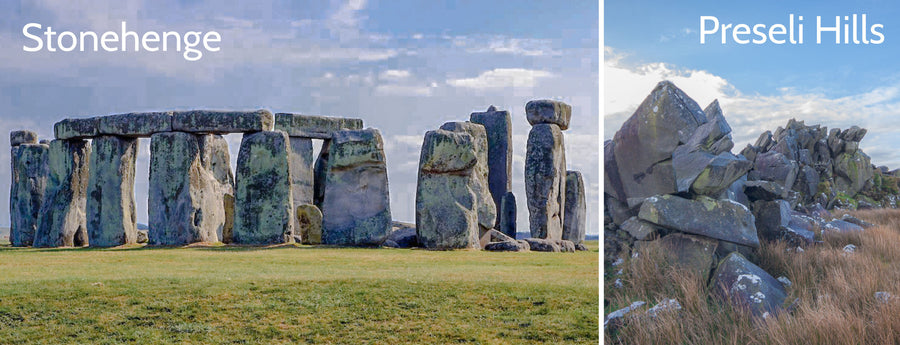It is believed that approximately 80 Preseli Bluestones, weighing upto 4 tons, were transported 150 miles (240 Km) from the Preseli Mountains (hills) Pembrokeshire, Wales, to the site of Stonehenge in Wiltshire, England, around 2500 BC (Neolithic period). Today only 43 Bluestones remain.
Preseli Bluestone was used to construct the inner circle of Stonehenge, with various different stone types used for subsequent phases of building, spanning 1500 years.
Although the Celts did not build Stonehenge, it has been an integral place of worship and ritual for them for centuries, and continues to the present day.
The precise reason for this magnificent structure remains shrouded in mystery and speculation. It has been postulated that it was an important site for ritual and worship, a place of burial, a healing site, an astronomical calendar, an alien landing site, and has associations with Merlin.
Although the exact purpose of its construction remains unclear, the very scale, and magnitude of effort required to build Stonehenge, so long ago, must reflect a unique and immense meaning to the people that built it, and is without doubt a very sacred site.
Today Stonehenge remains one of the most important prehistoric monuments in Britain, and was added to UNESCO’s list of World heritage Sites in 1986.

